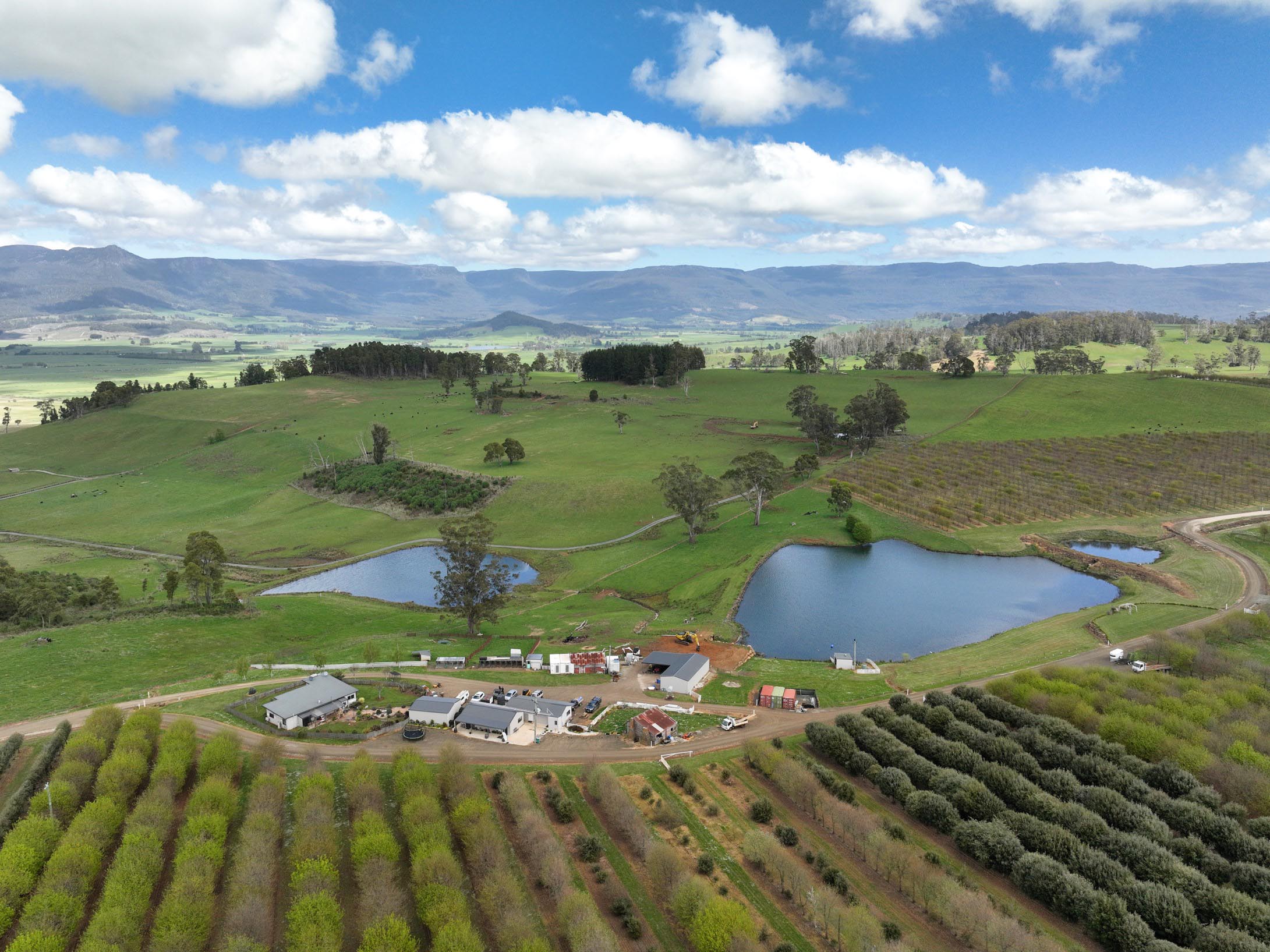UK rural property: Controlling land ownership
The Knight Frank Rural Property and Business Update – Our weekly dose of news, views and insight from the world of farming, food and landownership
11 minutes to read
Opinion
It was interesting to read an article in one of the weekend papers lamenting HMRC’s widely applauded announcement last week confirming that agricultural property relief (APR) will be available on land used for environmental purposes like BNG or nature-friendly farming. It claimed this would give the green light for wealthy environmentalists, such as Anders Polvsen and Lisbet Rausing, to rewild more land and damage the UK’s food security. Such articles tend to neglect the fact that the UK is actually about 75% self sufficient in the stuff we can commercially grow here, and much of the land being rewilded is pretty marginal anyway – Polvsen and Rausing’s main efforts, for example, are in the Scottish Highlands. What the announcement does do is to free farmers and landowners to make the best use of their land, something you’d think a newspaper read by many of them might approve of. More vexing, I would have thought, could be Scotland’s new Land Reform Bill, which aims to apply a raft of restrictions on how owners can manage and sell their property.
Do get in touch if we can help you navigate through these interesting times. You can sign up to receive this weekly update directly to your email here.
Andrew Shirley Head of Rural Research
In this week's update:
• Commodities – Grim rain grain forecast
• Scottish land 1 – Land Reform Bill published
• Woodlands – Grant funding boosted
• Scottish land 2 – Register or face fines
• Last chance – Farm productivity grants and urea
• Climate change – UK adaptation plans fall short
• Overseas news 1 – Danish farm carbon tax
• Overseas news 2 – Blueberry sets record
• Wilding – Knepp revisited
• Gourmet launch – Australian truffle farm
• UK housing – Buyer-seller gap emerges
• The Wealth Report – Out now
• Development land – Market stabilises.
• Farmland prices – 2023 ends on a high
• Country houses – 2023 better than expected
• The Rural Report – Watch the videos
Commodity markets
Commodities – Grim rain grain forecast
New numbers from the AHDB bring the impact of the heavy rainfall that has buffeted the UK into stark relief. Planted wheat area is down 15% to 1.5 million hectares and could fall even further depending on weather conditions over the next few weeks. This could see our wheat harvest drop from 14 million tonnes to 10 million tonnes raising the requirement for imports. Oilseed rape, meanwhile, has tumbled by 28% to 280,000 hectares – the biggest drop since the 1980s. Given grain and oilseed prices are determined by international markets, the UK’s woes haven’t led to a spike in farmgate prices here yet, but there was some support for markets last week as the USDA cut its estimates for global end-of-year stocks and estimates were cut for Brazil’s soybean harvest.

Need to Know
Scottish land 1 – Land Reform Bill published
Large blocks of land will have to pass a “transfer test” before they can be sold, according to proposals in the new Scottish Land Reform Bill that was published last week. The new rules will apply to sales over 1,000 hectares (2,471 acres) and mean ministers will be able to prohibit sales in certain cases until they can consider the impact on the local community. This could lead to some landholdings being lotted into smaller parts if that may help local communities. There will also be a legal responsibility for the owners of estates over 3,000 hectares (1,000 on inhabited islands where the holding is over 25% of the total area) to show how they use their land and how that use contributes to key public policy priorities, such as addressing climate change and protecting and restoring nature. These owners will also have to engage with local communities about how they use the land. The Bill also includes a number of measures to reform tenant farming and small landholding legislation, providing more opportunities to improve land, to become more sustainable and productive and to ensure that tenants are fairly rewarded for their investment of time and resources in compensation at end of tenancy. Rural Affairs Secretary Mairi Gougeon said: “We do not think it is right that ownership and control of much of Scotland’s land is still in the hands of relatively few people. We want Scotland to have a strong and dynamic relationship between its land and people.”
Woodlands – Grant funding boosted
Defra and the Forestry Commission have today (March 18th) announced an uplift in Woodland Creation Offer (EWCO) payments to take effect immediately. The current maximum rate per hectare available from additional contributions will increase by 45% from £8,000 to £11,600. That will increase to £12,700 in stackable payments if the land is also eligible for the new Low Sensitivity Land Payment. A new ‘Nature Recovery – premium’ payment option (£3,300 per hectare) has also been added to the Nature Recovery Additional Contribution. This is designed to encourage the planting or natural colonisation of highly biodiverse woodlands next to ancient woodland. Payments for flood risk management have doubled from £500 to £1,000 per hectare, and recreational access has increased from £2,200 to £3,700. Annual maintenance payments have also been raised from £350 to £400 per hectare, per year, for 15 years. Contact our grants team for more information.
Scottish land 2 – Register or face fines
In addition to working out the long-term implications of the Land Reform bill discussed above, the owners and long-term tenants of land in Scotland have until 1 April to register their interests or face a potential £5,000 fine. The Register of Persons Holding a Controlled Interest in Land was launched in 2022 and the original registration deadline of 1 April 2023 was extended by a year. Find out here if you need to register.
Last chance – Farm productivity grants and urea
English farmers who still have stocks of urea in their barns not treated with a urease inhibitor have until the end of March to get it on the ground. The deadline is part of efforts to cut ammonia emissions and will not be extended despite the wet weather, says Defra. Meanwhile, anybody planning to apply to Round 2 of Defra’s Improving Farm Productivity Grant, which includes generous support for solar and robotics schemes, have until Match 21st to submit expressions of interest. Grants of up to £500,000 are available, but the process is competitive. For advice on applications please contact Henry Clemons.
Talking points
Climate change – UK adaptation plans fall short
The UK’s Climate Change Committee has just announced that the government’s plans to ensure the country is sufficiently prepared for the effects of the changing climate fall well short of what is required. Last week the CCC released its assessment of the the government’s third National Adaptation Programme, which was published last July. “The evidence of the damage from climate change has never been clearer, but the UK’s current approach to adaptation is not working,” said Baroness Brown, Chair of the Adaptation Committee. “Defra needs to deliver an immediate strengthening of the government’s programme, with an overhaul of its integration with other government priorities such as Net Zero and nature restoration. We cannot wait another five years for only incremental improvement,” she added.
Overseas news 1 – Danish farm carbon tax
Danish farmers could be the first in the world to be hit by a carbon tax under new proposals being considered by the hygge-loving nation’s government. A group of government advisors recently mooted a tax ranging from 750 kroner (£86) to 125 kroner (£14) per tonne of C02 emitted. Under the most stringent scenario, it is forecast farming’s emissions, which make up 22% of the country’s total carbon emissions, could fall by 45% compared with 1990 levels. However, cattle and pig production would fall by around 20%, 8,000 jobs would be lost, 45% of Danish farms would slip into the red and a 500g pack of beef would rise by the equivalent of around 50p. Not so cosy for farmers.
Overseas news 2 – Blueberry sets record
On a lighter note, an Australian farmer has muscled his way into the Guinness Book of Records by smashing the record for the world’s biggest blueberry by growing a 4cm-wide, 20.4-gramme whopper - about the same size as a table tennis ball. You wouldn’t need too many of those with your porridge.
Knowledge Exchange
Wilding – Knepp revisited

Rewilding is a bit of a controversial issue in farming circles given the current focus on food security. But before putting the boot in too much I’d urge anybody to read the new illustrated edition of Wilding written by Isabella Tree who, along with her husband Charlie Burrell, created the infamous or iconic – depending on your point of view – Knepp Castle rewilding project.
What stuck with me after reading the book and interviewing Charlie and Isabella on the estate in 2019 was that Knepp was not simply an environmental project, but a pragmatic solution to revitalise a farming business that on less-than-ideal soils was making no money.
Property News
Gourmet launch – Australian truffle farm

Our Tasmanian team has just launched a tasty opportunity for anybody looking for an Australian lifestyle and farming play. Needlesdale, near Deloraine, is a 200-acre truffle farming and beef business with plenty of water and fantastic views of the Tasmanian Highlands. There is a three-bed house and the guide price is AU$3.6 million (£1.9 million).
UK housing – Buyer-seller gap emerges
Mixed messages in the first quarter of the year have increased the gap between buyer and seller prices expectations, according to the latest market update from my colleague Tom Bill. Initial optimism at the beginning of 2024 that we could see five cuts to the Bank of England base rate during the year have been tempered somewhat, and demand is lagging slightly between supply, reports Tom.
Our Latest Property Research
The Wealth Report – Out now

The 2024 edition of The Wealth Report, Knight Frank’s leading piece of thought leadership on global wealth and property trends is out now. This instalment of the report includes the latest wealth creation data – spoiler, there are more rich people – and an article by yours truly on global farmland markets and how they are being influenced by ESG and Natural Capital. Download your copy.
Development land – Market stabilises.
Newly released figures from the Knight Frank Residential Land Index show that England greenfield and urban brownfield values were flat in Q4 2023 compared with the previous quarter. Previously, urban brownfield values had fallen by 20% since the most recent peak of the market in the first quarter of 2022 up to Q3 last year, with greenfield down 17% during the same period. Greater economic confidence and a slowdown in the rise of build costs helped underpin values, says my colleague Anna Ward. Read her full report for more numbers and insight.
Farmland prices – 2023 ends on a high
The Q4 2023 instalment of the Knight Frank Farmland Index has now been published. The average value of bare agricultural land rose by 2% in the final quarter of the year to break the £9,000/acre barrier for the first time. Annual growth was 7%, which outperformed a number of other asset classes. Our research suggests values may flatten out this year, but supply remains limited and demand robust. Read the full report for more insight and analysis.
Country houses – 2023 better than expected
Kate Everett-Allen, our international residential research guru, has added the country homes market to her portfolio and has a bit of good news to report. “Prime country house prices declined by 5.8% in 2023. While this figure represented a sizable correction after two stellar years of growth, the rate of decline was lower than our forecast of -7% for the year. A growing sense that mortgage rates are at, or close to their peak, began to influence market sentiment towards the end of the quarter – a theme we expect to build this year. That’s not to say prices and sales volumes will bounce back strongly. Although the Bank of England opted to hold interest rates at 5.25% in December, the cost of borrowing remains at a 15-year high.” Read Kate’s full report.
The Rural Report – Watch the videos!
You've read the book, now watch the videos! To complement the thought-provoking articles contained within the 2023/2024 edition of The Rural Report our whizzy Marketing team has also created a series of videos featuring many of the report's contributors. Head to our very own YouTube channel to discover more about biodiversity net gain and regenerative farming; find out how we are helping Guy Ritchie's Ashcombe Estate on its diversification journey; and read about the travails of an entrepreneurial Zimbabwean searching for a farm for his family. Plus, lots more.